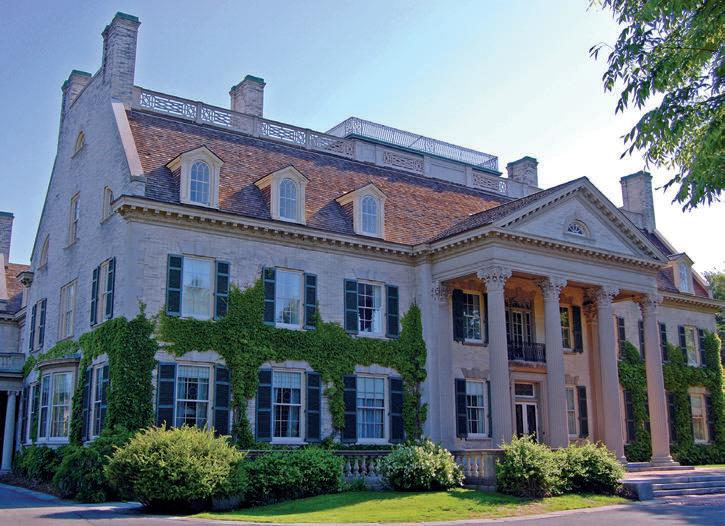
So a decade later, when the state of New York decided to create a museum of photography in Eastman's memory, the university donated the mansion and grounds to house it. Today, it seems fitting that the estate of one of the earliest pioneers in photography has become famous as the George Eastman Museum. It holds several million objects related to photography and film. It leads the way in film preservation and conservation. It offers viewings of original historic films in its specially equipped Dryden Theater. COBBLESTONE spoke to the folks at the museum to understand what goes into their preservation work.
What makes classic films so fragile?
Basically, the materials that they were made on: Nitrocellulose-based material decomposed from the time it was made because it interacted with moisture in the air. Nitrocellulose also has a habit of catching fire when exposed to flames, or it can spontaneously combust.
Sounds dangerous! Is that why filmmakers switched to a different type of film by 1949?
They came out with what they called safety material on an acetate base.
Did that decompose, too?
It didn't turn into powder like nitrate film can, but it shrank and got what is commonly called vinegar syndrome.
What about today's films?
Today, we use more of a plastic, called polyester. Polyester is a long-chained synthetic molecule. Polyester is used for different things, such as fabric fibers, bottles, filters... and films.
How does the George Eastman Museum store films?
This story is from the July/August 2023 edition of Cobblestone American History Magazine for Kids.
Start your 7-day Magzter GOLD free trial to access thousands of curated premium stories, and 9,000+ magazines and newspapers.
Already a subscriber ? Sign In
This story is from the July/August 2023 edition of Cobblestone American History Magazine for Kids.
Start your 7-day Magzter GOLD free trial to access thousands of curated premium stories, and 9,000+ magazines and newspapers.
Already a subscriber? Sign In

Eye in the Sky
An interview with Joe Piotrowski

Airborne Animals
Humans have taken to the skies in balloons, gliders, and airplanes-but we're not alone among the clouds. Animals of all sorts have evolved to harness wind power.

TAKING OFF
The Wright brothers expected airplanes to “take off,” but even they might be amazed at the way the airline industry has become big business. In the past, it was expensive to send something by plane.

GROWTH OF AN INDUSTRY
After their historic flight at Kitty Hawk in 1903, Wilbur and Orville Wright returned to Dayton, Ohio. They spent the next few years making adjustments and building additional versions of their powered aircraft in their bicycle shop.

WHY KITTY HAWK?
The Wright brothers searched carefully for the best place to test their gliders and flying machines. Their main concern was for good, steady winds. But they also hoped to find a remote location to allow them to perform tests away from the public eye.

Two Brothers From Ohio
Most people do not realize that the Wright brothers—Wilbur, born in 1867, and Orville, born in 1871—performed various scientific experiments before inventing their aircraft. For as long as anyone in their hometown of Dayton, Ohio, could remember, the Wright boys had worked on mechanical projects.

A Helping Hand
May 6, 1896. A group of people who had gathered beside the Potomac River, just south of the U.S. capital, grew quiet. Then, it erupted in cheers as a small, unmanned aircraft took to the skies and flew for more than half a mile. The flight came seven years before the Wright brothers’ first manned, powered flight. The inventor of the aircraft was Dr. Samuel Pierpont Langley.

THE IDEA MEN
People dreamed of flying thousands of years before the Wright brothers found success near Kitty Hawk, North Carolina. These dreamers, such as Leonardo da Vinci, studied birds flying and imagined how humans might do the same—if only they had wings. Other men developed a more hands-on approach to the topic. Early inventors made wings of cloth, glue, and feathers and tied these creations to their arms in an attempt to imitate nature.

Da Vinci's 4 Designs
Have you ever wondered how a bird flies? Leonardo da Vinci (1452–1519) did. He thought that understanding how a bird flies would provide the key to human flight. So, what did da Vinci learn from birds?

Silken Wings
Seven hundred years before the Wright brothers began experimenting with human flight, the Chinese had already mastered its secrets—with kites.